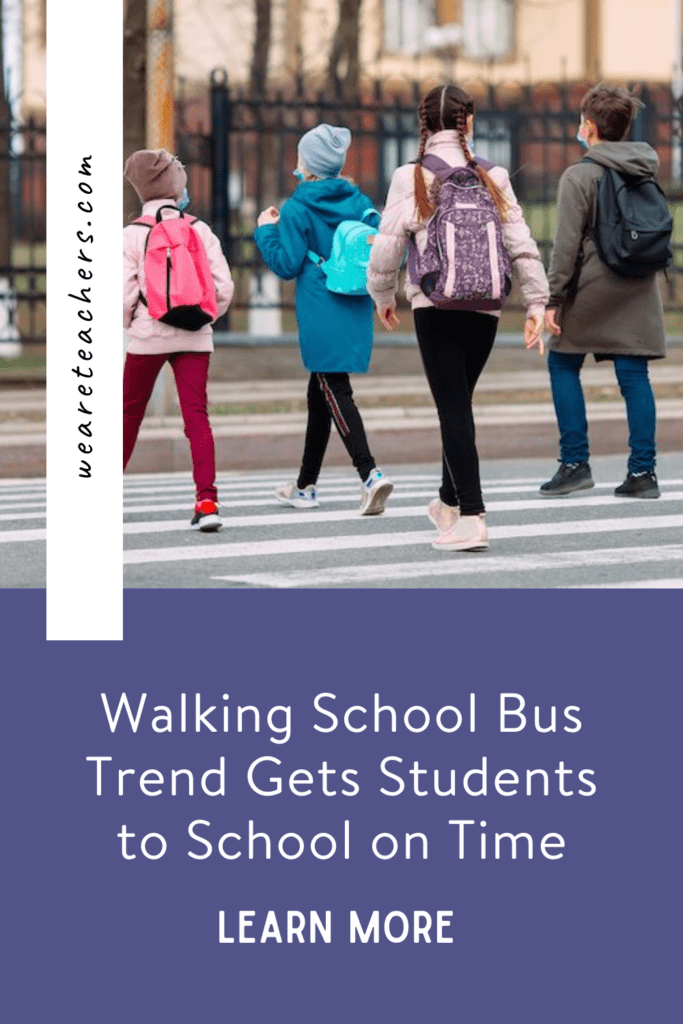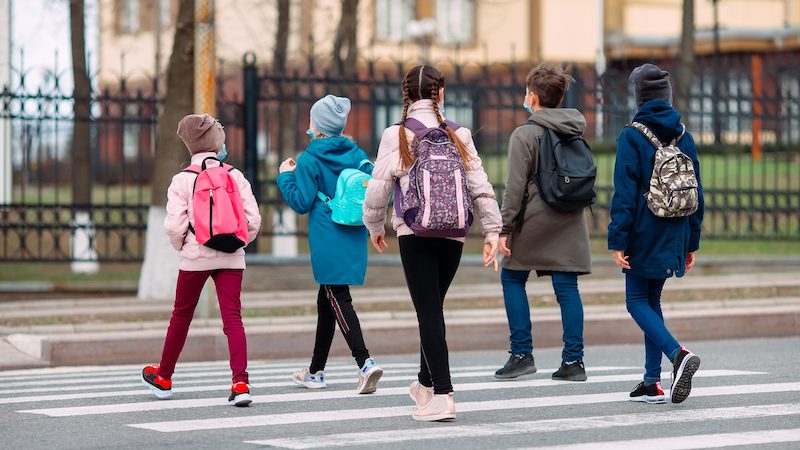For years, school bus shortages have made it hard for students to get to class on time. Things became even more challenging due to the pandemic. Administrators have tried to address the issue and offer incentives to attract drivers, but in many cases, nothing is working. Now, more schools are creating a Walking School Bus program to fill the need.
Research shows that kids “who walk to school are more alert and ready to learn.” While over 60 percent of elementary school students made the daily trek forty years ago, less than 15 percent of today’s kids are walkers. Could Walking School Bus programs reverse this? Let’s take a closer look at this growing trend, then sound off—would this work at your school?
The Walking School Bus program
In Madison, Wisconsin, adult leaders meet up with students to walk to school together. The Walking School Bus program is so popular at participating schools, in fact, that kids actually missed it when they transitioned to learning online. Many see it as a fun and healthy way to start the day. It also helps parents feel safer about their children walking to school.
As Rosalia Gittens, community school resource coordinator at Leopold Elementary School, explains, the experience has been empowering. “It really encourages families to walk to school. It gets that energy out before they get to the building and gets them to school on time. If you are excited about walking with your group and your volunteer leader, you are looking forward to (walking again) the next day.”
[contextly_auto_sidebar]
Benefits to students
In addition to being a safer, healthier option for kids to get to school, there are many benefits to Walking School Bus programs. Not only can it improve attendance and reduce tardiness, it encourages exercise and cuts down on traffic around schools. Here are a few other perks:
- Provides pedestrian experience and education for students.
- Increases daily physical activity for students.
- Students are alert, awake, and ready to learn.
- Studies show links between physical activity and academic achievement.
- Solution for families concerned about unsafe neighborhoods or safe walking routes.
- Improves family and community engagement and positive social opportunities for students, families, teachers, and community volunteers.
As Pat Wongkit, program director of the Northport and Packer community learning centers, these programs help youngsters “start out their day right on a happy note. We talk with them about all kinds of stuff when we are walking on our way to school,” Wongkit said. “Even though I know these kids pretty well, I continue to learn new things all the time.”
Start your own Walking School Bus
According to the Safe Routes Partnership, “walking is one of the simplest, most effective, and most affordable strategies for kids and adults to build physical activity into their lives. One mile of walking translates to 2/3 of the recommended 60 minutes of physical activity each day.” Additionally, the organization recognizes walking programs as a real-time solution to the bus driver shortage.
Ready to start a Walking School Bus program at your school? Safe Routes Partnership has created a step-by-step guide. Follow five practical and easy-to-implement steps to jumpstart your own program at school that involve planning the route, recruiting students and leaders, and evaluating and adjusting your program. You’ll even find a list of state contacts who can access funding for your program, a way to reach out for expert help, and so much more.
Would this work at your school?
Have your students been impacted by the bus driver shortage? Are you looking for ways to help your kids be more active? We’d love to hear if you’d be interested in starting a Walking School Bus program at your school. Head over to our Facebook community and weigh in!
Looking for classroom suggestions? Be sure to subscribe to our newsletter so you can get our latest tips.


